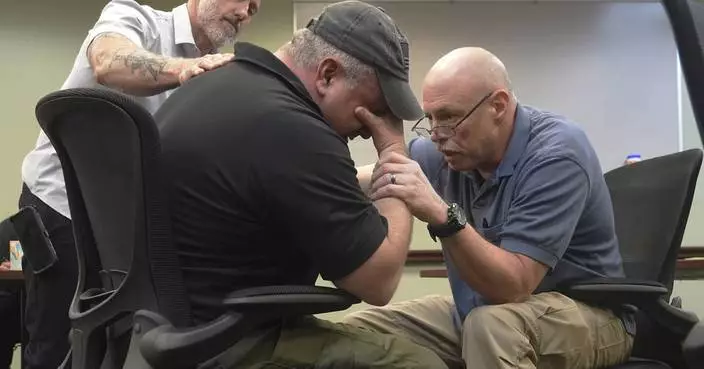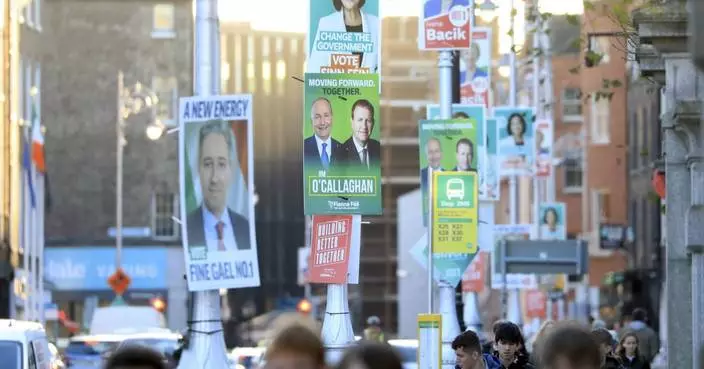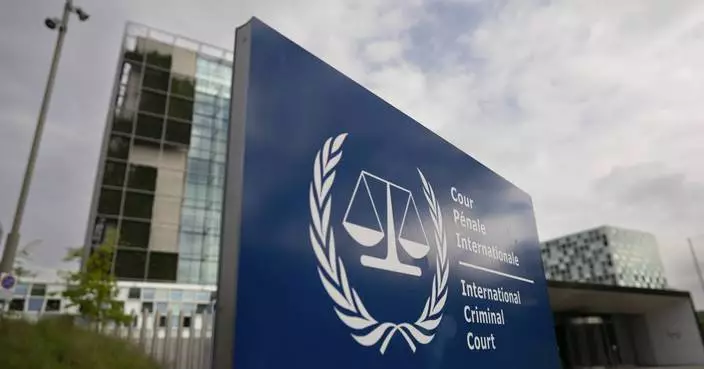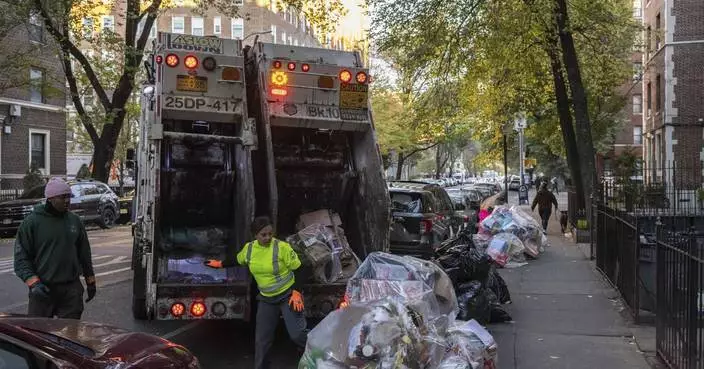It didn’t take long for Claire Thompson’s Minnesota Frost teammates to conjure up a nickname for the rookie defenseman with a knack for offensive play-making and a sharp analytical mind.
“We call her, 'The Human ChatGPT,’” Grace Zumwinkle said, before fellow Frost forward Taylor Heise chimed in.
“We had meetings last night and we’re like, ‘What’s your consensus on what happened? Give us the SparkNotes,’” Heise said, laughing. “She’s such a cognitive person. I just feel like she has a lot going on up there.”
At 26, Thompson isn’t your typical rookie in preparing to make her PWHL debut on Sunday when the defending-champion Frost open their season hosting New York. After spending last year pursuing her medical degree at NYU, the Princeton graduate traded her stethoscope for a hockey stick to resume an already successful playing career.
At Princeton, Thompson finished fifth on the Tigers career list of blue-liners with 87 points (31 goals) in 129 games, while gathering numerous conference accolades for her play and studies. Thompson turned heads at the 2022 Beijing Games, where she helped Canada win gold and finished with two goals and 11 assists to shatter the single-tournament record for points by a defenseman.
Her return to hockey coincides with the Olympic cycle, with Thompson seeking the opportunity to represent Canada at the 2026 Games in Italy. She was selected third overall by Minnesota in the draft in June, and has since rejoined Team Canada, picking up an assist in three games in the Rivalry Series against the U.S.
“I think always in the back of your mind there are going to be what-ifs going on, and so I was happy to put those all to rest,” Thompson said of her relatively seamless return.
“I don’t think anything's surprised me,” she added. “It’s been a lot of fun being back on the ice. I think I miss being in a team environment every single day and collectively working toward a shared goal.”
That isn’t to suggest Thompson has put her medical studies aside entirely. She’s working on as many medical projects as she can comfortably handle in her spare time.
Thompson isn't so much torn between medicine and hockey, but rather can’t do without both passions.
“I have stayed in very close contact with a lot of my med school classmates, and hearing about their stories. ... So I definitely miss that aspect,” she said. “But while I was doing that, I missed this. So it’s great to have two different things that you enjoy so much.”
Welcome to the complex world of Claire Thompson, something her Canadian teammates have become accustomed to, and is now being introduced to a Frost team made up of mostly Americans.
Minnesota captain Kendall Coyne Schofield thought she had it tough last year juggling motherhood and hockey before encountering Thompson.
“No. You won’t find me in med school. Definitely not. I’ve been lucky to room with her this week, and it’s been fun to ask her a million questions,” she said.
Coyne Schofield was particularly intrigued by what Thompson saw in making a lengthy breakout pass to set up Sarah Nurse for a breakaway during a recent Rivalry Series game.
“I was like, ‘Oh, my goodness.’ And that was a moment where, obviously, we’re on different teams in that situation. And I’m like, ’Well, I can’t wait to play with her,'” she said. “It’s constant plays like that where you’re just like, ‘Holy cow.’”
Thompson joins a talented core of Frost defensemen, which includes veteran U.S. player Lee Stecklein, Natalie Buchbinder and fellow Canadian Sophie Jaques, college hockey’s 2023 player of the year.
Analytical as Thompson might be, Canadian and Toronto Sceptres coach Troy Ryan praised her fearless approach to taking calculated risks in attempting plays other defensemen might resist in fear of a turnover — and not getting down if it winds up being a mistake.
One reason Ryan believed Thompson was passed over by the Canadian national team program at the Under-18 stage was because of her gambling style. Ryan would have Thompson play no other way in recalling a conversation he had early into her national team career.
“I think she was expecting me to tell her to dial it back a bit. And I was actually, like, ‘You’ve got to go more,’” Ryan recalled. “I’m a big, big fan of hers. And I find her to be such a unique person with everything that she’s juggling. It’s incredible. And I’m jealous, to be honest.”
Thompson wants to specialize in orthopedic surgery, though she made all the rounds — pediatrics, psychiatry and neurology — as part of her clerkship last year while spending nights practicing with the NYU men’s club team.
Now Thompson's focused on hockey — well, mostly.
“I love to be able to do both things, but unfortunately I can’t be at two places at once,” she said.
“I’m young. I’m still able to play hockey at a high level, and I know that won’t always be the case,” Thompson added. “But people have much longer careers in medicine, so I know when that time comes I have a very good other option to go to.”
AP women’s hockey: https://apnews.com/hub/womens-hockey
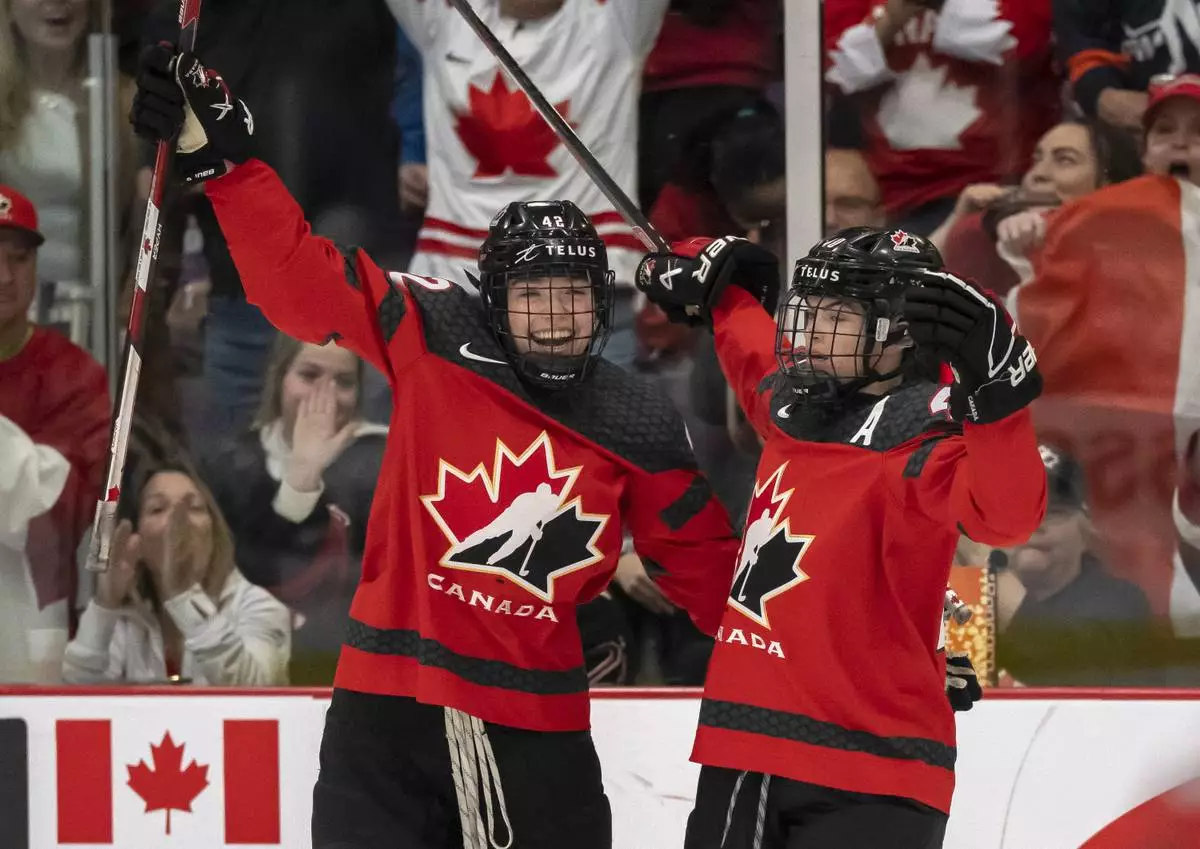
FILE - Canada defender Claire Thompson (42) congratulates forward Blayre Turnbull (40) after Turnbull's goal against Sweden during the first period of a quarterfinal match at the women's world hockey championships in Brampton, Ontario, April 13, 2023. (Frank Gunn/The Canadian Press via AP, File)
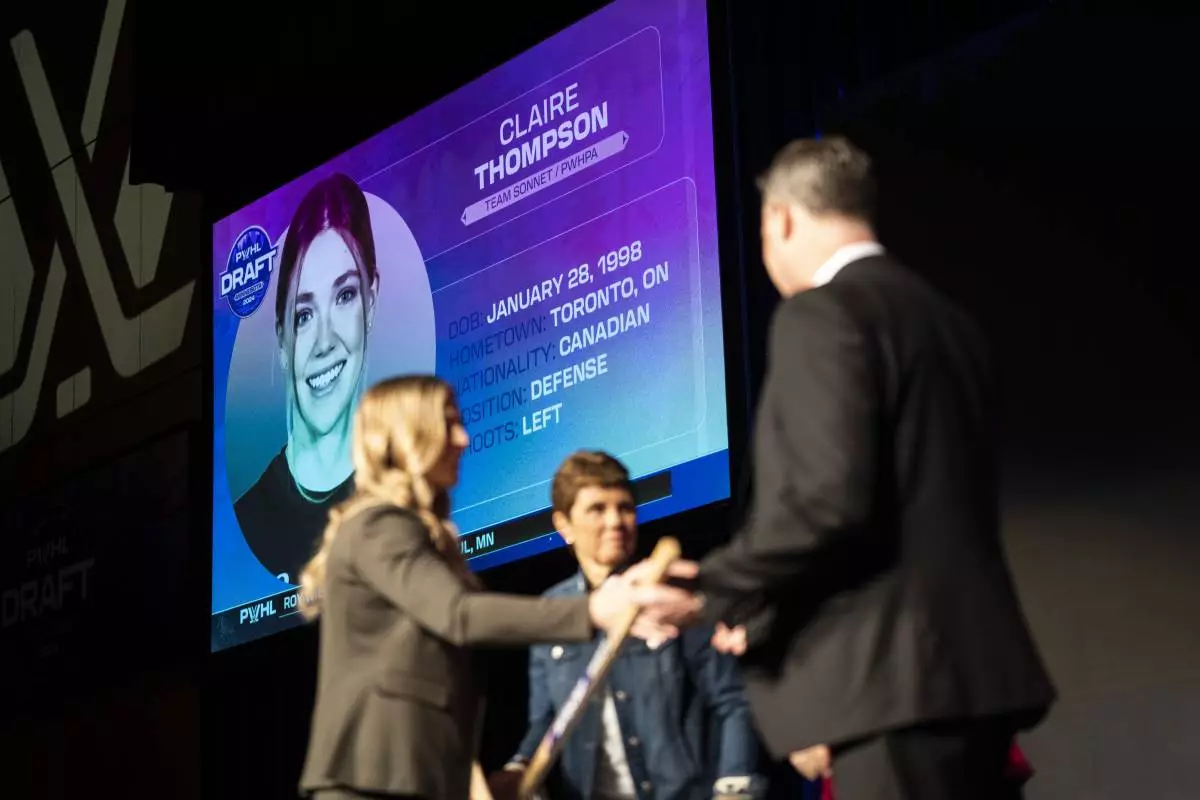
FILE - Minnesota's first pick Claire Thompson's image is displayed as she was not present as she was drafted in the first round during the PWHL hockey draft n St. Paul, Minn., June, 10, 2024. (Renee Jones/Star Tribune via AP, File)
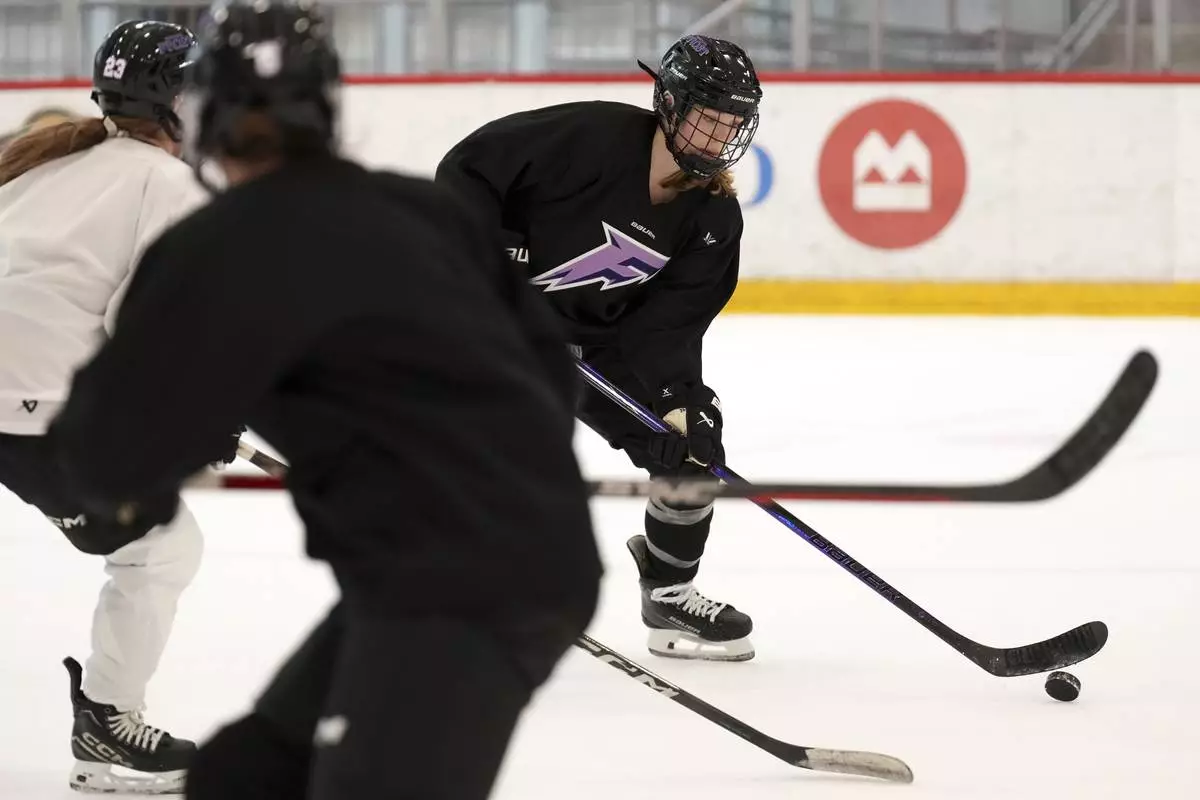
Minnesota Frost defender Claire Thompson (42) controls the puck during a PWHL hockey practice Thursday, Nov. 14, 2024 at TRIA Rink in St. Paul, Minn. (Anthony Souffle/Star Tribune via AP)
JERUSALEM (AP) — For many across the Middle East, the Israel-Hezbollah ceasefire came as a relief: the first major sign of progress in the region since war began more than a year ago.
But for Palestinians in Gaza and families of hostages held in the territory, the news appeared only to inaugurate a newer, grimmer period of the conflict there. For them, it marked yet another missed opportunity to end fighting that has stretched on for nearly 14 months.
Palestinians had hoped that any ceasefire deal with Hezbollah would include a truce in Gaza as well. The families of people kidnapped when Hamas-led militants stormed southern Israel in October 2023, meanwhile, wanted part of the agreement to include returning their loved ones. Instead, the ceasefire was confined only to the fighting in Lebanon.
“We feel this is a missed opportunity to tie in the hostages in this agreement that was signed today,” said Ruby Chen, whose son, Itay Chen, was taken hostage from an Israeli military base and has been declared dead.
As much as they were intertwined, the two wars have been very different. In Lebanon, Israel said its aim was to drive Hezbollah back from the countries’ shared border and end the militant group's barrages into northern Israel. The ceasefire that took effect Wednesday is intended to do that.
In Gaza, Israel’s goals are more sweeping. Prime Minister Benjamin Netanyahu has been resolute in insisting that Hamas must be completely destroyed and Israel must retain lasting control over parts of the territory. Months of talks have failed to get Netanyahu to back down from those demands — or to convince Hamas to release hostages under those terms.
For Palestinians in Gaza, that means continuing misery under an Israeli campaign that has demolished much of the territory and driven almost the entire population from their homes. Hundreds of thousands are going hungry while living in squalid tent cities as the second winter of the war brings cold rains and flooding.
”They agree to a ceasefire in one place and not in the other? Have mercy on the children, the elderly and the women,” said Ahlam Abu Shalabi, living in tent in central Gaza. “Now it is winter, and all the people are drowning.”
The war between Israel and Hamas began on Oct. 7, 2023, when militants attacked Israel from Gaza, killing around 1,200 people and taking some 250 hostage. Israel’s retaliatory offensive has rained devastation on the Palestinian territory, killing over 44,000 people, according to local health officials. The officials, who do not distinguish between civilians and fighters in their count, say over half of the dead are women and children.
Hezbollah began firing into Israel a day after Hamas' attack in solidarity with the Palestinian militant group. The two sides have exchanged near-daily barrages since. Moving thousands of troops to its northern border, Israel ramped up bombardment of southern Lebanon and launched a ground invasion there two months ago, killing many of Hezbollah’s leaders.
Palestinians now fear Israel’s military can return its full focus to Gaza — a point that Netanyahu made as he announced the ceasefire in Lebanon on Tuesday.
“The pressure will be more on Gaza,” said Mamdouh Younis, a displaced man in a central Gaza tent camp. Netanyahu, he said, can now exploit the fact that “Gaza has become alone, far from all the arenas that were supporting it, especially the Lebanon front.”
Israeli troops are already engaged in fierce fighting in Gaza’s north, where a two-month offensive has cut off most aid and caused experts to warn a famine may be underway. Strikes all over the territory regularly kill dozens.
In signing onto the ceasefire deal, Hezbollah reversed its long-held position that it wouldn’t stop its barrages across the border unless Israel ends the war in Gaza.
“This could have a psychological impact, as it will further entrench the understanding that Palestinians in Gaza are alone in resisting against their occupiers,” said Tariq Kenney Shawa, a U.S. policy fellow at Al-Shabaka, a Palestinian think tank.
It also leaves Hamas — its capabilities already severely damaged by Israel’s offensive — to fight alone. Hamas official Osama Hamdan appeared to accept Hezbollah’s new position in an interview Monday.
“Any announcement of a ceasefire is welcome. Hezbollah has stood by our people and made significant sacrifices,” Hamdan told the Lebanese broadcaster Al-Mayadeen, which is seen as politically allied with Hezbollah.
Khalil Sayegh, a Palestinian analyst, said the ceasefire could make Hamas even less popular in Gaza, by proving the failure of its gambit that its attack on Israel would rally other militant groups to the fight.
“It’s a moment where we can see the Hamas messaging become weaker and weaker, as they struggle to justify their strategy to the public,” said Sayegh.
U.S. Secretary of State Antony Blinken said Tuesday that the Israel-Hezbollah ceasefire could help force Hamas to the negotiating table because it would show the group that the “cavalry is not on the way.”
But Hamas experts predicted that it would only dig in both on the battlefield and in talks. Hamas has insisted it will only release all the hostages in return for a full Israeli withdrawal from Gaza.
“I expect Hamas will continue using guerrilla warfare to confront Israeli forces in Gaza as long as they remain,” said Shawa.
Dozens of Israelis thronged a major highway in Tel Aviv on Tuesday night, protesting for the return of the hostages as the country waited to hear if a ceasefire in Lebanon had been agreed.
Around 100 people taken hostage are still held in Gaza, at least a third of whom are believed to be dead. Most of the other hostages seized by Hamas were released during a ceasefire last year.
Ricardo Grichener, the uncle of 23-year-old hostage Omer Wenkert, said the ceasefire with Hezbollah showed how the Israeli government was openly disregarding the hostages.
Even though Israel has inflicted greater damage on Hamas in Gaza than on Hezbollah in Lebanon, he said “the decision to postpone a deal in Gaza and release the hostages is not based on the same military success criteria.”
The most recent effort to wind down the war stalled in October. U.S. President Joe Biden said Tuesday he would begin a renewed push, but his administration is now in its waning days after the reelection of former President Donald Trump.
“This ceasefire doesn’t concern our hostages. I believe that Netanyahu forgot about them, and he just wants to keep fighting in Gaza,” said Ifat Kalderon, clutching a photo of her cousin, Ofer Kalderon, who is a hostage and a father to four.
“Ofer yesterday had his 54th birthday. His second birthday in Gaza,” she said. “It’s unbelievable that he’s still there.”
This story has been updated to correct the spelling of Ruby Chen's first name.
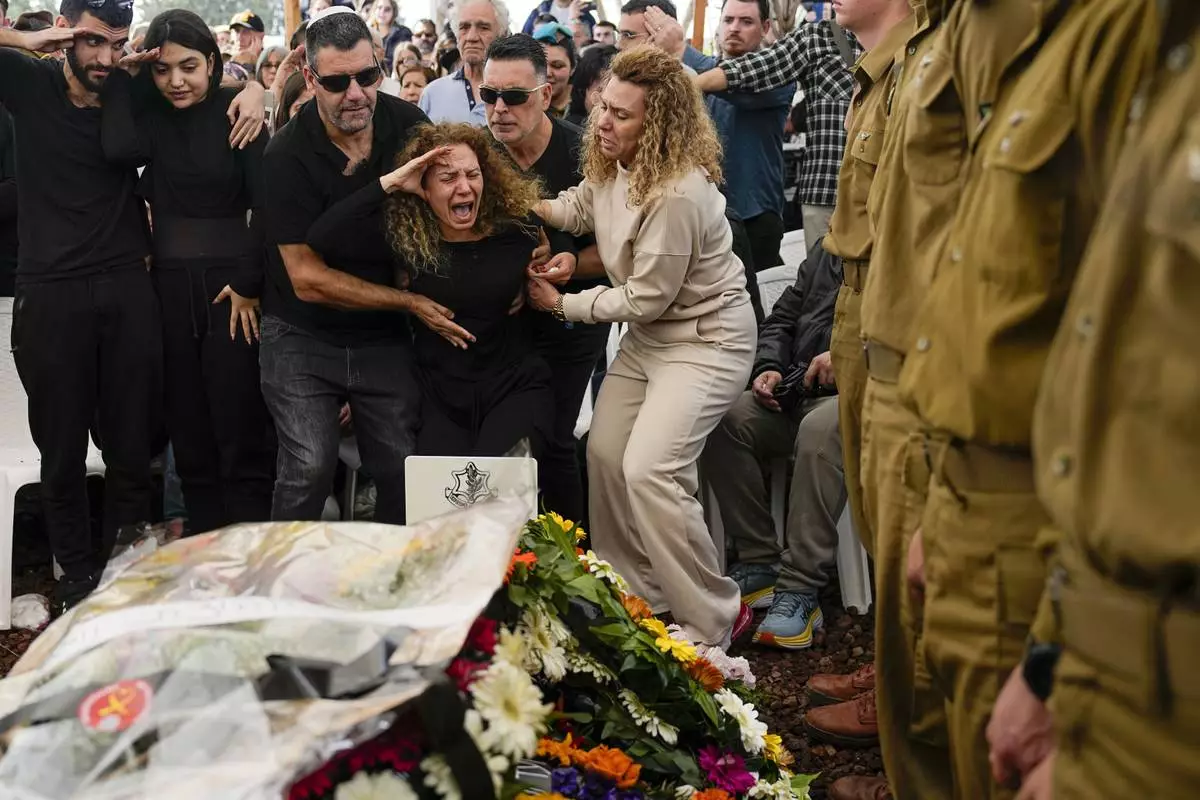
Sivan, mother of Israeli soldier, Sergeant Dolev Malca, was killed during Israel's ground operation in the Gaza Strip, screams as she salutes her son during his funeral in Shlomi, northern Israel, on the border with Lebanon, Sunday, March 3, 2024. (AP Photo/Ariel Schalit)
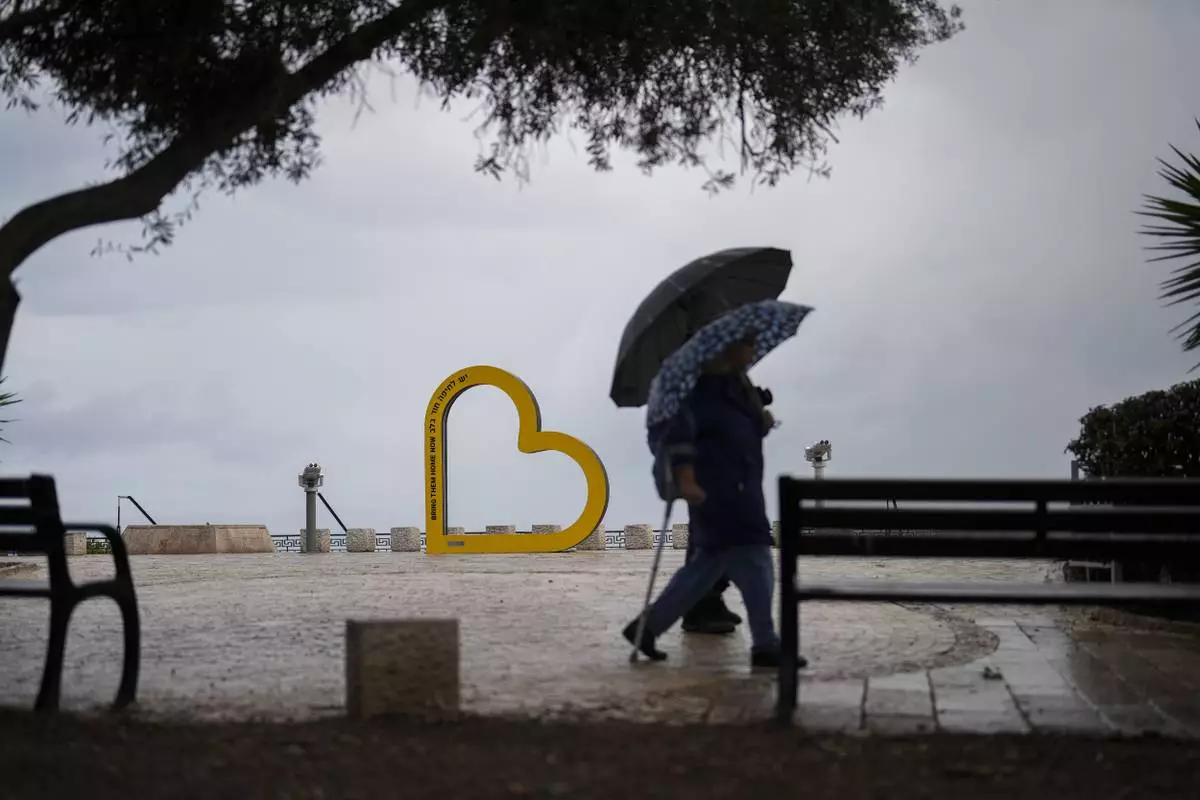
People walk past a sign reading in Hebrew and English "Bring them home now" in reference of the of hostages held in the Gaza Strip by the Hamas militant group, in Haifa, Israel, Tuesday, Nov. 26, 2024. (AP Photo/Francisco Seco)
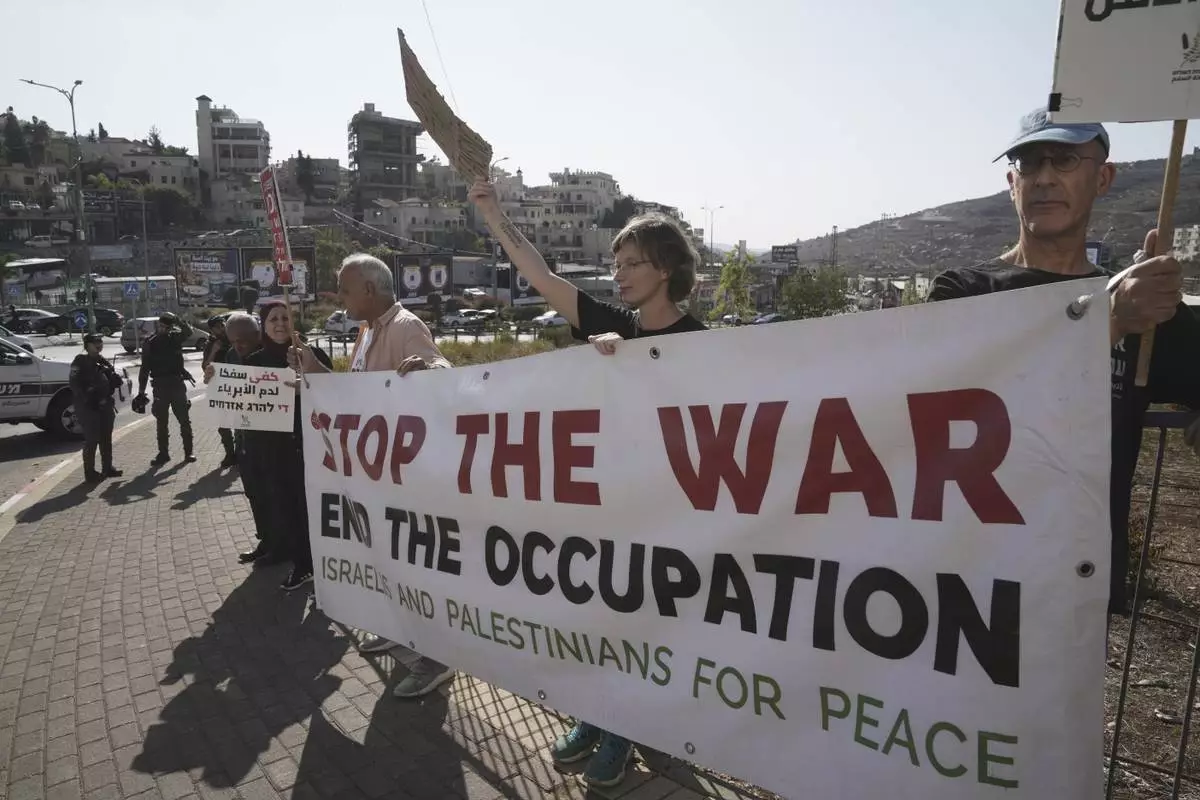
Israelis and Palestinian citizens of Israel protest Israel's military operations in the Gaza Strip, in Umm al-Fahm, Israel, Friday, Nov. 15, 2024. (AP Photo/Mahmoud Illean)
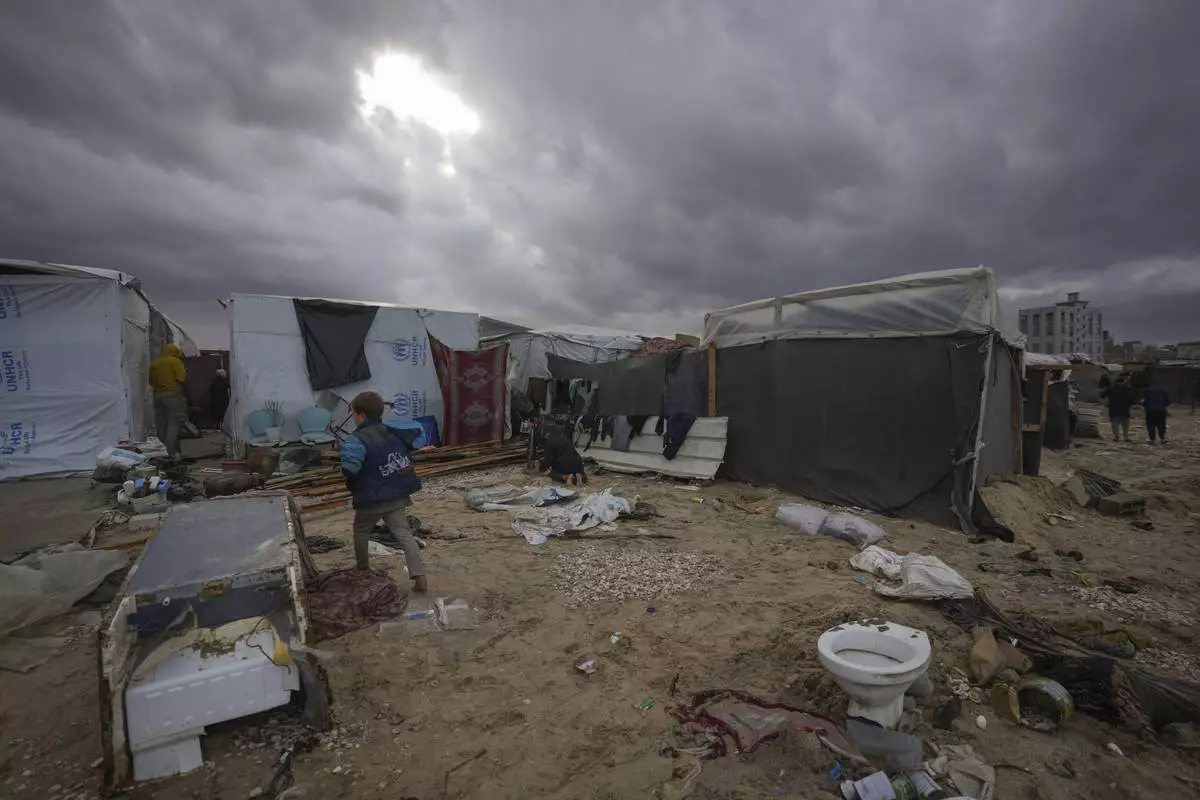
Storm clouds loom over the tents occupied by displaced Palestinians on the beach front in Deir al-Balah, Gaza Strip, Tuesday Nov. 26, 2024. (AP Photo/Abdel Kareem Hana)
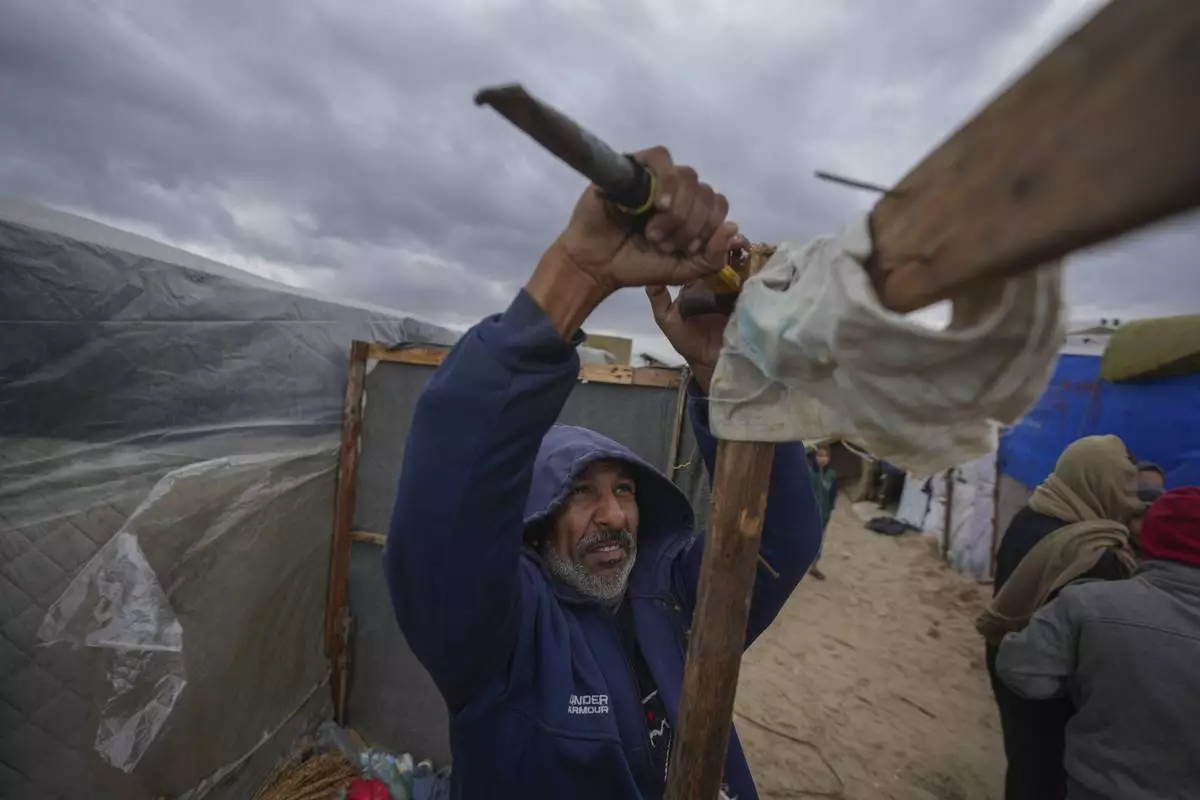
A Palestinian secures his tent as storm clouds loom over a camp for displaced Palestinians on the beach front in Deir al-Balah, Gaza Strip, Tuesday Nov. 26, 2024. (AP Photo/Abdel Kareem Hana)
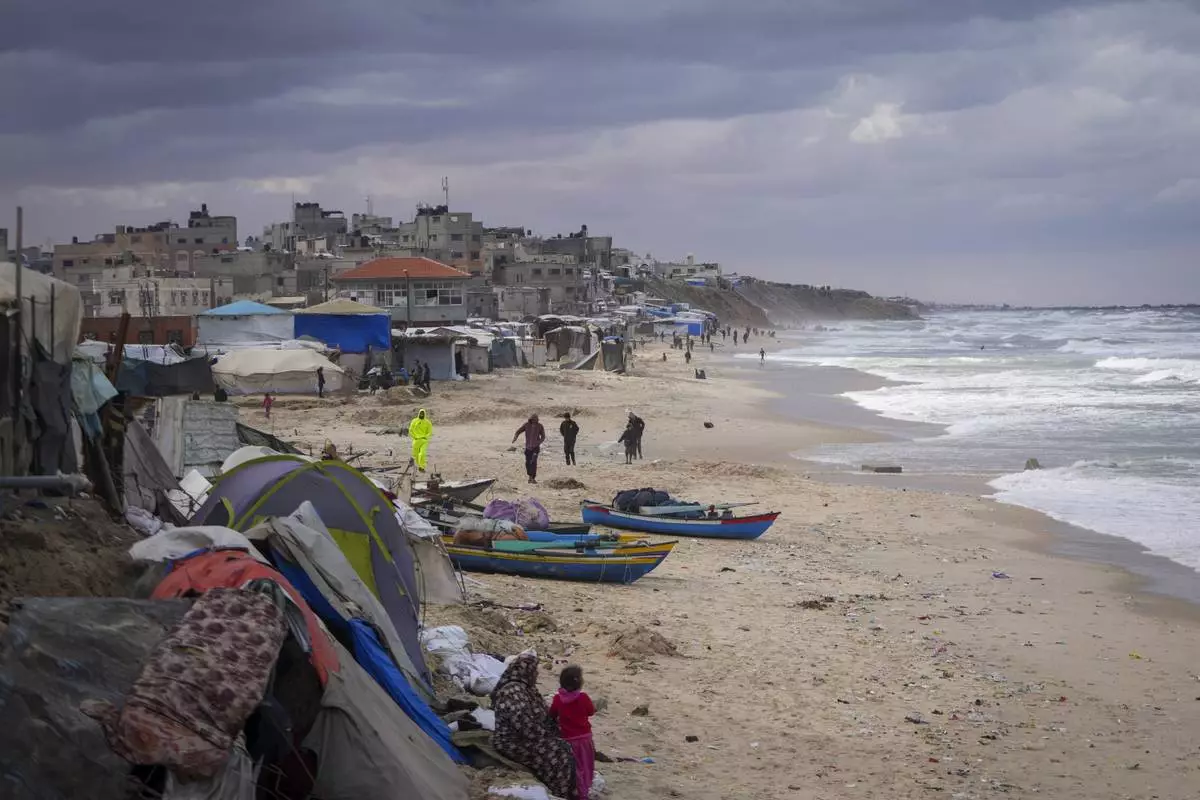
Tents occupied by displaced Palestinians are seen at the beach in Deir al-Balah, Gaza Strip, Tuesday Nov. 26, 2024. (AP Photo/Abdel Kareem Hana)













